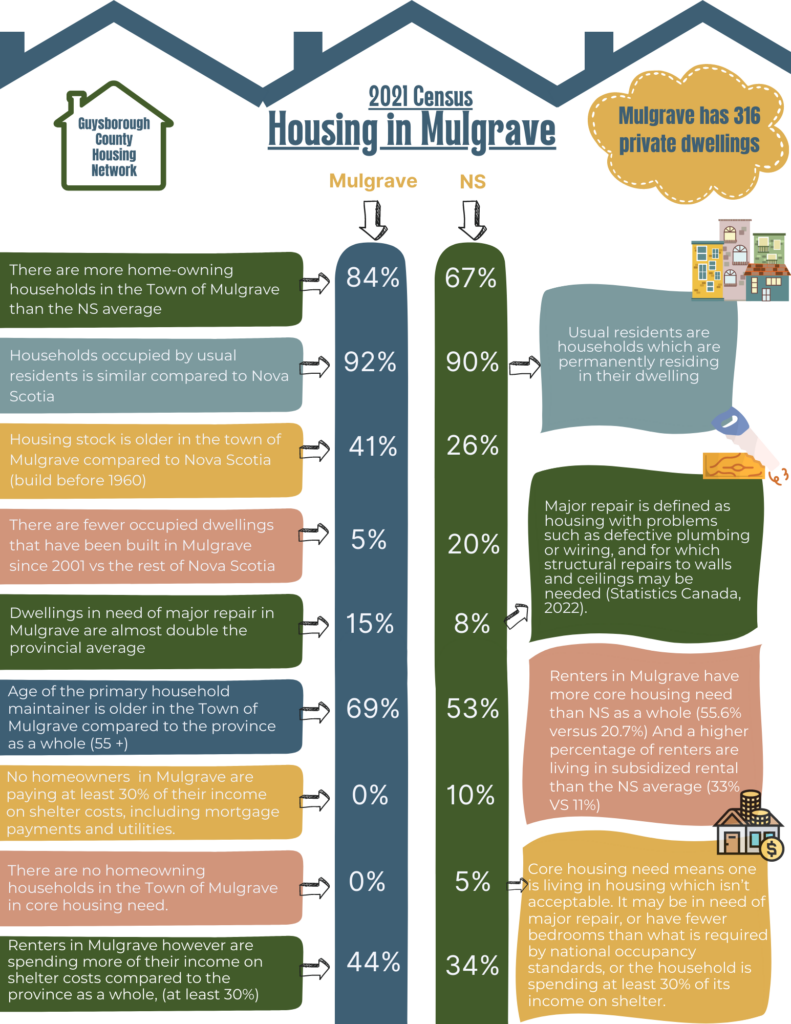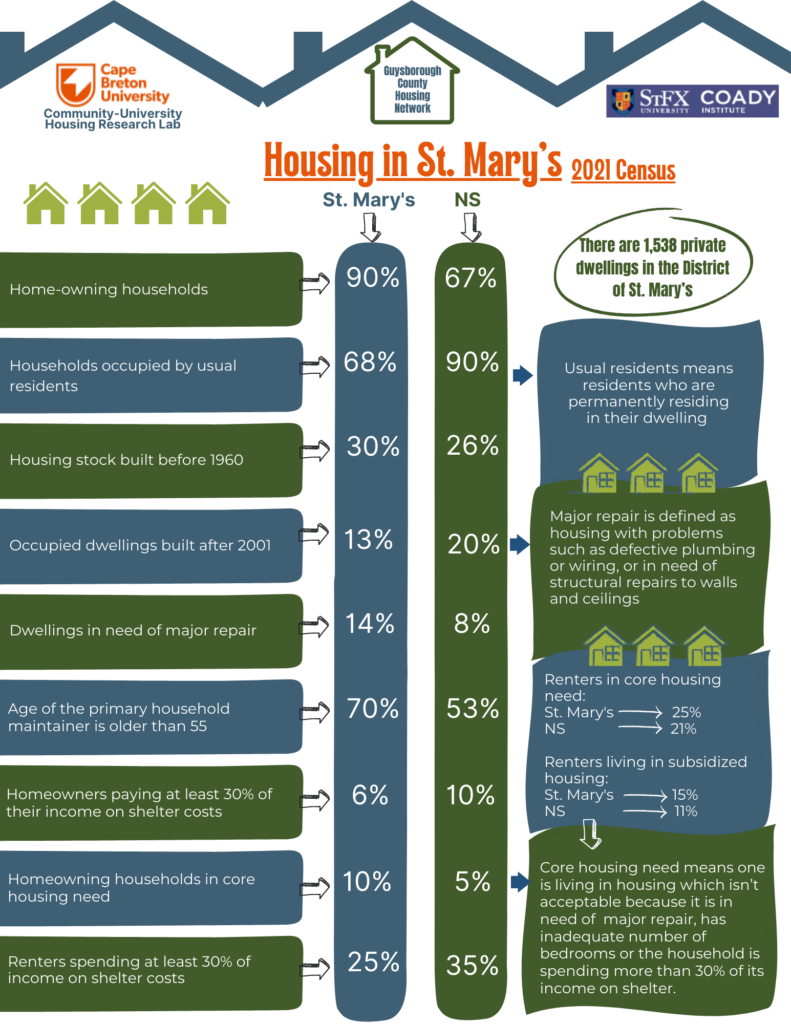
Census data from 2021 indicate that there are 1,538 private dwellings in the District of St. Mary’s, with 1,047 (or 68%) occupied by usual residents, meaning households which are permanently residing in their dwelling (Statistics Canada, 2023). This is a much lower percentage to what we see in the province as a whole; across Nova Scotia, there are 476,007 private dwellings, with 428,228 of these occupied by usual residents (or 90%). Overall, in looking at Guysborough County as a whole, only 73% of dwellings are occupied by usual residents…
Affordable housing is a basic human need, essential infrastructure for our province, and a strategic sector for our society and economy. Affordable, safe housing is crucial for a healthy society, quality of life, attracting new residents, social equity and growing the economy.
The results of the Guysborough County Housing Network research project, undertaken with partners from StFX University and Cape Breton University are found here. The study describes the results of community consultations, interviews with service providers and realtors, stats can data analysis and other provincial data (2022).


The Remedy Report is a sweeping catalyst for change for persons with disabilities in Nova Scotia. It marks a move towards more self-determination and choices for where and how people with disabilities live and work. As residential care centres in Nova Scotia close down, former residents from Guysborough County will require options closer to family, friends and other supports. A Community Consultation was held at the CLC in September to discuss what this means for Guysborough County housing and our support services network. Community First is continuing these conversations and looking at ways to build supportive housing into our housing development strategy.
The 2025 Living Wages Report outlines the income needed for workers in Newfoundland and Labrador, Nova Scotia, and Prince Edward Island to afford a modest but decent standard of living. Living wage rates rose across most of Atlantic Canada, with Halifax ($29.40/hour) and Labrador–Northern Peninsula ($28.30/hour) among the highest, while P.E.I. remained the lowest at $22–23/hour. Housing and food are the largest costs in household budgets, with rent increases continuing to outpace wages. Although inflation has slowed, many families still struggle with affordability, especially in urban areas where rents remain disproportionately high. While new government programs—such as P.E.I.’s child benefit—help offset costs, the cancellation of the federal Canada Carbon Rebate in 2025 will leave low-income households worse off.
The report emphasizes that too many workers earn well below living wages: in Atlantic Canada, minimum wages are $6–12 lower per hour, leaving nearly half of Nova Scotia’s workforce below the threshold. Women and visible minority workers are disproportionately affected. The authors recommend that employers commit to paying living wages, and that governments expand public services, raise minimum wages, and strengthen supports like child care, housing, and income transfers. Without such measures, many households will remain unable to meet basic needs despite working full-time.
Community Profile and Rental Snapshot based on the 2016 Canadian Rental Housing Index